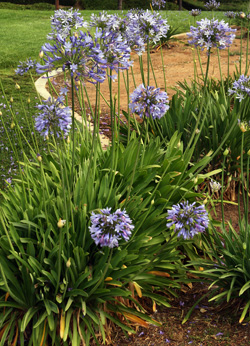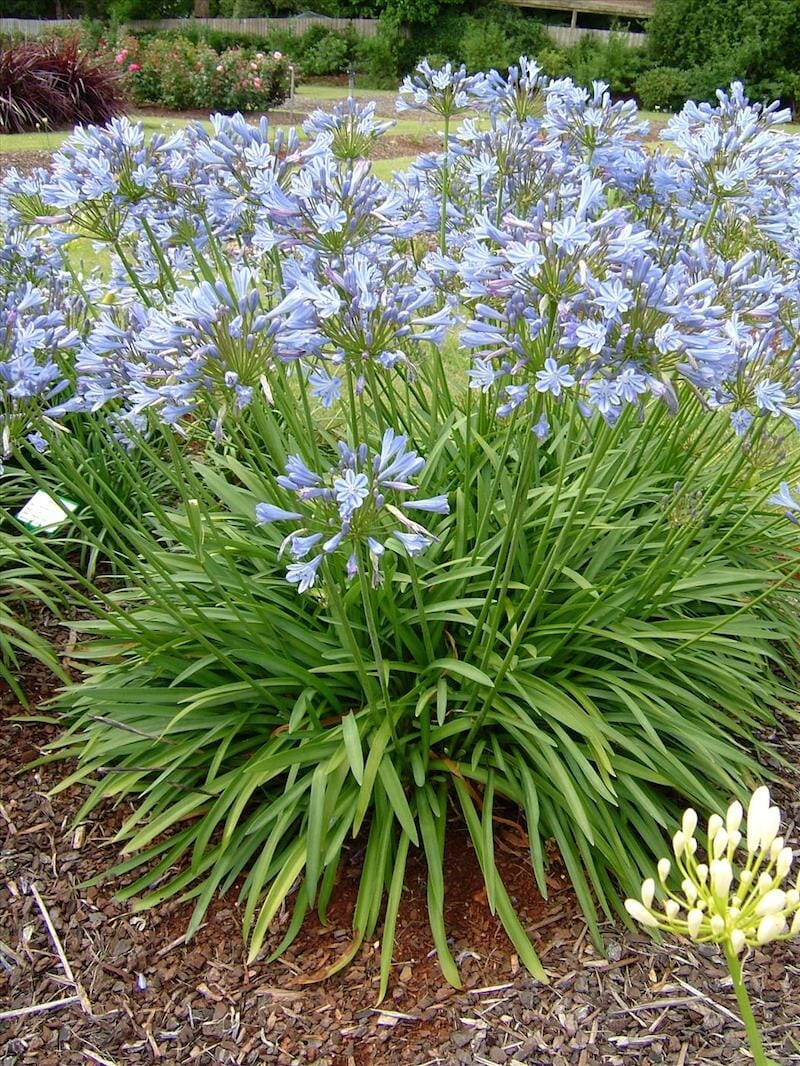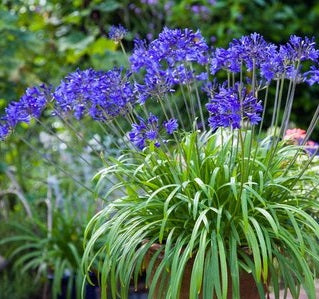Grasping the Art of Agapanthus Care: Essential Steps for Healthy Growth and Vibrant Blooms
In the realm of gardening, the cultivation of agapanthus stands as a rewarding venture for those who look for to support these classy flowering plants. With their striking blooms and stylish foliage, agapanthus has caught the attention of gardeners worldwide. Nonetheless, achieving optimal development and vivid blossoms calls for a nuanced strategy that incorporates different crucial actions. From choosing the ideal range to understanding trimming strategies, the journey towards cultivating growing agapanthus plants is diverse and holds the crucial to opening the full potential of these organic gems.

Picking the Right Agapanthus Range

When selecting the best Agapanthus variety for your garden, think about factors such as climate suitability, blossom shade, and growth routine. Agapanthus, generally referred to as Lily of the Nile or African lily, can be found in a selection of shades ranging from shades of purple and blue to white. Select a flower shade that complements your existing garden scheme to create a harmonious landscape. Additionally, think about the environment in your area to ensure the Agapanthus range you pick can grow in your specific problems. Some selections are much more tolerant of cold temperature levels, while others like warmer climates. Understanding the growth habit of different Agapanthus selections is important for appropriate placement within your yard. Some ranges have a clumping development practice, ideal for borders or containers, while others have a more dispersing nature, appropriate for ground cover or mass plantings. By meticulously examining these aspects, you can select the ideal Agapanthus selection to boost the charm of your garden.
Perfect Growing Conditions
Taking into consideration the optimal environmental requirements is essential for effective Agapanthus growing. Agapanthus grows in well-draining dirt with a somewhat acidic to neutral pH level. When growing, pick an area that obtains full sunlight to partial shade. In hotter environments, providing some mid-day shade can stop scorching of the leaves. Agapanthus plants are sensitive to cool temperature levels and need to be protected from frost during wintertime months.
To make certain healthy and balanced growth and dynamic flowers, plant Agapanthus light bulbs at a deepness of about 2-4 inches and space them 8-12 inches apart. Adding raw material, such as compost, to the soil can improve drainage and fertility, advertising durable origin growth. Mulching around the base of the plants aids preserve dampness and reduces weed growth. Regular watering is important, particularly during the growing season, to keep the soil continually damp yet not saturated.
Watering and Fertilizing Tips
Maintaining proper moisture degrees and offering essential nutrients are crucial components in the care program for Agapanthus plants. When it comes to watering Agapanthus, it is critical to strike a balance. These plants prefer constantly damp soil but are vulnerable to root rot if overwatered.
Feeding Agapanthus is necessary for advertising healthy development and prolific flowers. Use a well balanced fertilizer, such as a 10-10-10 formula, in the early spring as new development arises. By adhering to these watering and fertilizing suggestions, you published here can guarantee your Agapanthus plants grow and create lively, durable blooms.
Pruning Methods for Agapanthus
Trimming Agapanthus plants at the ideal times and with correct strategies is vital for preserving their health and wellness and promoting optimal development and flowering. The ideal time to trim Agapanthus is in late wintertime or very early spring before new growth arises.
For flowered stems, wait until the blossoms have actually perished and after that trim them back to the base. This not only cleans the plant's look yet additionally urges the development of new flower buds. Deadheading invested flowers can also redirect the plant's power right into producing more blossoms instead than setting seeds. However, if you intend to accumulate seeds for proliferation, leave some flowers to dry and mature on the plant.
Remember to make use of clean, sharp tools to make specific cuts and lower the danger of presenting illness. Agapanthus. Regular trimming will certainly assist maintain your Agapanthus looking healthy and balanced and cool while making certain a bountiful screen of stunning read the article blooms
Managing Typical Pests and Conditions
After guaranteeing appropriate trimming strategies for Agapanthus, it is vital to address typical parasites Get the facts and diseases that can affect the wellness and vitality of these plants. One typical parasite that affects Agapanthus is the Agapanthus gall midge.
Additionally, Agapanthus plants can experience from origin rot if they are grown in poorly draining pipes dirt. By being attentive and taking punctual activity versus conditions and bugs, you can aid your Agapanthus plants grow and generate vivid blooms. Agapanthus.

Conclusion
To conclude, understanding the art of agapanthus care involves picking the ideal range, offering perfect growing problems, appropriate watering and fertilizing, ideal trimming techniques, and addressing usual bugs and diseases. By adhering to these necessary steps, you can ensure healthy and balanced growth and vibrant blossoms for your agapanthus plants. Keep in mind to routinely check and preserve your plants to promote their total wellness and long life.
To make sure healthy development and vibrant blossoms, plant Agapanthus bulbs at a deepness of regarding 2-4 inches and room them 8-12 inches apart. By complying with these watering and feeding ideas, you can ensure your Agapanthus plants prosper and produce lively, long-lasting flowers.
One common bug that influences Agapanthus is the Agapanthus gall midget. Additionally, Agapanthus plants can experience from origin rot if they are planted in poorly draining pipes soil. By adhering to these essential actions, you can make certain healthy and balanced growth and lively blooms for your agapanthus plants.